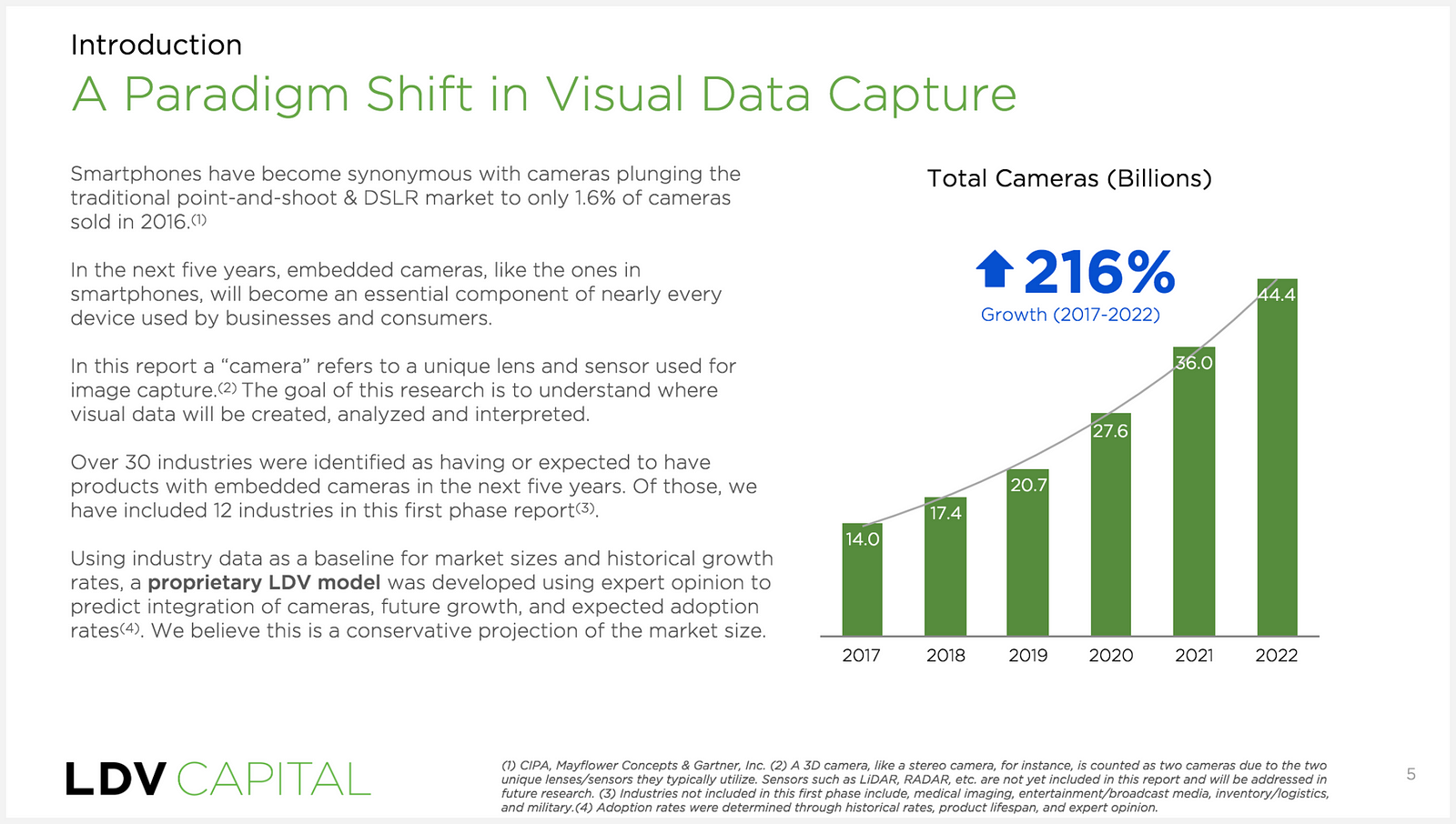
Image credit: ‘Circuit’ [modified] — By Amelia Wattenberger
This is a new series about cameras and their relationship to face recognition, machine learning, and how, in the future, the ways in which we interact with technology will be radically different.
Follow the Kairos team as we explore the impact of cameras on technology and the ways your business can benefit from it.
First, the data.
LDV Capital, a venture capital firm focussed on Visual Technologies, recently published a 19 page report thick with some pretty eye opening data around cameras.
Specifically, how many cameras we can expect to have watching us, what they are watching us for, and how those insights will be used.
According to their study, by 2022 there will be more than 44,354,881,622 [1] (that’s 44 BILLION) cameras in use globally, collecting even more billions of images for visual collateral. This is incredible — but what’s interesting — is that most of these images will never be seen by human eyes.
“Visual Technologies are any technologies that capture, analyze, filter, display or distribute visual data for businesses or consumers. They typically leverage computer vision, machine learning and artificial intelligence.”
- LDV Capital
This forecast is a revelation that our use of cameras is evolving into something markedly different than the random Snapchat clips and candid family memories of now. If images are not being seen by humans, then what is seeing them? Identifying us in them? Aggregating them?
The 220% increase in the number of cameras over the next five years is almost exclusively for the accommodation of artificial intelligence applications. In fact, photo management systems like Veritone and Vidigami utilize Kairos Face Recognition platform to help them do just that — recognize people in photos and aggregate them.

'45 Billion Cameras by 2022 Fuel Business Opportunities' — LDV Capital
This is just one, very straight forward, photo industry specific example of how businesses are employing AI to be leveraged by visual technologies. And with a slim 1.6% share of all camera sales in 2016, it’s safe to say that point-and-shoot & DSLR cameras are rapidly headed to the electronic hereafter.
Cameras have always had purpose. Now they’re purpose driven.
LDV’s insights into the dramatic increase in the number of cameras from now to 2022, while foretelling the imminent extinction of the point and shoot and DSLR — is hipping us to what is taking their places — Embedded Cameras.
Similar to the ones in smartphones, these tiny digital eyes will be in nearly every device used by businesses and consumers. That “Daily Specials” sign at the hostess station of your favorite restaurant? The rental car for your latest business trip? All set to have, if not currently fitted — with embedded cameras.
FURTHER READING:
And let me be clear, the word “camera” is to be interpreted, according to LDV, as “… a unique lens and sensor used for image capture.” We have the privilege of experiencing the actual evolution of a device that we have come to know as one thing, for all of our lives to this point, into something completely different, to the extent that the word “camera”, itself, is becoming outdated.
Want to know why the “Daily Specials” sign at the hostess station of your favorite restaurant, and your last rental car, are fitted with embedded cameras? Join us next time, when we’ll get into it.
Series catch-up:
#1--The Beginning
#2--The Middle
#3--The End
_____
[1] 45 Billion Cameras by 2022 Fuel Business Opportunities

Brian Brackeen
Brian is the CEO at Kairos, a Human Analytics platform that radically changes how companies understand people.